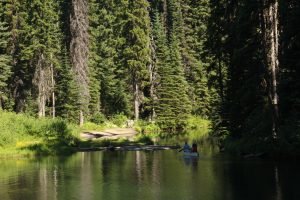Retirement. It’s a stage of life that many of us anticipate eagerly, complete with visions of re-dedicating our lives to passions like travel, the outdoors, volunteering, or books we want to catch up on.
 But it’s easy to overlook the social isolation that can accompany this milestone.
But it’s easy to overlook the social isolation that can accompany this milestone.
Social isolation can become a particular problem as we navigate the life changes that often come with aging, such as losing the ability to drive, devoting time to care for an ailing spouse, or moving into a retirement community where we don’t know anyone. Social lives, once taken for granted, can quickly disappear.
According to the AARP, four million older adults enrolled in Medicare have poor social networks — and prolonged isolation can be as bad for your health as smoking 15 cigarettes a day. Here in metro Atlanta, where one in five of us will be over the age of 65 by 2040, the issue has especial resonance.
That’s why Metro Atlanta RSVP’s program is offering a speaker series that explains the health impacts of these conditions and suggests techniques to help. Learn more and request a speaker here.
Here are some key things to know about social isolation, loneliness, and depression.
Retirement can be tough for men
Many older men – and women – whose identities and social lives were tied to the workplace struggle in retirement. And certain stereotypes exacerbate the issue. Many people believe that it’s admirable for men to go it alone, rather than ask for help. But in reality, people are biologically programmed to work together to accomplish things. We all crave some degree of social interaction.
“We guys are socialized to keep on trucking.” Hear Ernest James Allen tell his story.
Defining terms: social isolation vs. loneliness vs. depression
Social isolation refers to a lack of contact between a person and society, whether or not it’s by choice. One in three Americans age 65 and older lives alone, while fully half of people 85 and older live alone.
Loneliness is the psychic pain and distress that happens when one feels alone, while depression is a disease whose core symptoms include depressed mood and a lack of interest in activities that a person previously enjoyed.
Someone with depression doesn’t always look “sad”
Depression can look different in older adults than in younger people. Older individuals may not claim to feel sadness, but rather exhibit irritability or a case of “nerves”. Physical complaints like body aches or an upset stomach are also more common, as are problems with cognition.
Below, hear Wilma Jenkins talk about her battle with depression, including the stigma against mental health issues that she sees in the African-American community, and what it’s been like to reveal this issue to friends.
A matter of public health
These days, experts view all three of these concerns — social isolation, loneliness, and depression — as public health issues. Just as thirst is a symptom that we’re dehydrated and should drink water, loneliness is a signal from our brains that we need to find social contact.
Experts recommend talk therapy — combined with medication, if necessary — and physical exercise, to combat depression. Seek help immediately if you have major symptoms of depression.
Suggestions for change
On the individual level…
Change begins with confronting how we think about aging and older people. Loneliness is not a natural part of aging, and our needs for social interaction — including intimacy and sexual contact — continue throughout our lives.
Opportunities are missed to improve health outcomes when mental illness is under-recognized and under-treated. This PDF provides a range of signs and symptoms of depression. Medicare offers free annual depression screenings for patients 65 and older. Contact your primary care physician for more information.
Consider inviting a trained retired professional from Metro Atlanta RSVP’s program to come talk with your organization about these phenomena and what to do about them. Learn more about our topics, and request a speaker here.
More broadly…
Some organizations across the country have instituted home sharing programs that match older adults who have extra space with younger people looking for housing.
Also consider getting involved at your local senior center or volunteering in your community to meet new people and stay engaged with others.


